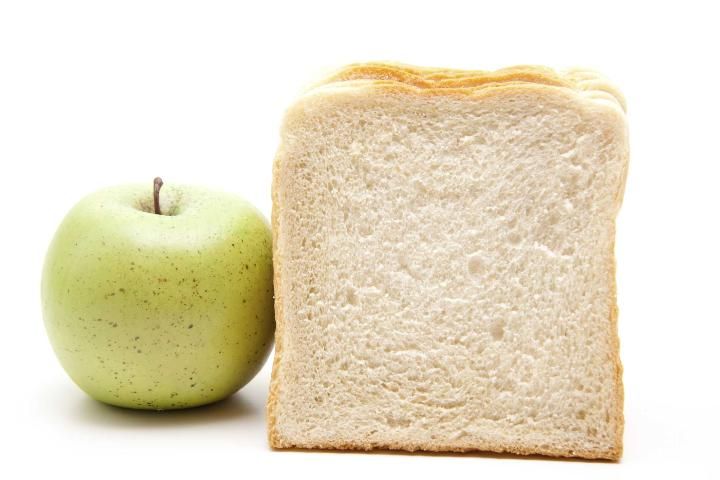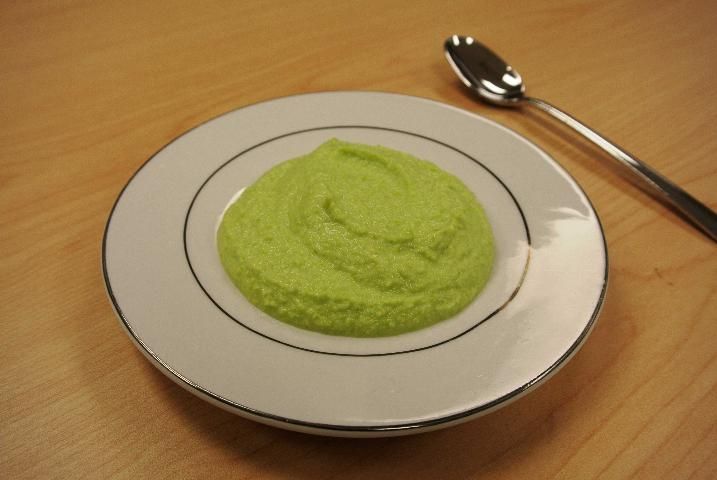Caregivers of older adults face unique challenges when providing nutrient-rich foods to those with chewing/swallowing problems. This document offers information on the importance of food texture for older adults, with tips for enhancing texture-modified foods.
What is food texture?
Food texture is defined as those properties of food that are sensed by touch in the mouth and with the hands. We use many words to describe food texture—foods can be soft or hard, mushy or crunchy, or smooth or lumpy. Texture is important to the enjoyment and acceptability of foods. Would you enjoy a mushy apple or soggy toast?

Credit: MayerKleinostheim/iStock/Thinkstock, © MayerKleinostheim
Food Texture and Swallowing Problems
Older adults with chewing and swallowing problems may not be able to safely eat foods with regular textures. They may need to eat only soft foods, or they may require that foods be cut up or ground/minced. Offering foods that normally have a texture that is easier to swallow, such as cooked cereal, pudding, and yogurt, may be recommended. Gravies and sauces may need to be added to foods to ensure that foods are moist enough to swallow. Some older adults with swallowing problems require a puréed diet—a diet where foods are blended to a smooth texture.
Enhancing Texture-Modified Foods
It is important that older adults with swallowing problems be provided foods with a texture that is easy and safe to swallow. However, as food texture is lost with grinding and puréeing, foods may become less acceptable. Enhancing the flavor and appearance of texture-modified foods will help to improve the acceptability and enjoyment of these foods.
Taste

Credit: UF/IFAS
When foods are ground or puréed, the taste of the food changes—liquids may be added during preparation, which may then dilute or mask the flavor of the food; gravies or sauces may be added to ensure the food is moist but may also change the flavor of the food. Microwave reheating can change the taste of the texture-modified food. Aroma, which is closely related to taste, may be decreased or altered during preparation as well.
Once texture has been modified, taste becomes a very important sense used to identify the food. Enhancing the natural flavor of the food may help with food recognition.
Adding a little sugar or other sweetener goes a long way to improving the acceptability of some texture-modified foods, such as sweet vegetables, while adding a dash of salt, gravy, or a flavor enhancer to meats is recommended. Serving "hot foods hot" and "cold foods cold" improves flavor and acceptability, too, and is very important for food safety!
Enhancing the flavor of foods has also been shown to increase the flow of saliva and improve immunity (Schiffman 2000). Highly flavored food stimulates swallowing and mastication.
Food Presentation
The appearance of the food is dramatically changed with mincing and puréeing. The appearance of the food often changes so much that the individual receiving the meal may not know what foods are being served (Lepore et al. 2014).

Credit: UF/IFAS
The color of the food becomes a key to food recognition. For example, if an orange-colored, puréed food is served for dinner, we might expect it to be carrots (remember, the shape and texture of the carrots have been lost). Or is it sweet potatoes? Squash, perhaps? If the puréed food is green, is it green peas, green beans, broccoli, or some other green vegetable?
Mixing vegetables, such as a purée of peas and carrots, may make it impossible to identify the food because both the color and taste of the original vegetables are lost.
With the loss of food texture, the ability to see, taste, and smell is essential to the enjoyment of the food. However, illness, medications, and disease conditions can alter these senses in the older adult and further decrease the enjoyment of food. Ensuring natural, vibrant colors and delicious flavors and aromas in texture-modified foods may result in food enjoyment and improved food intake in people with swallowing problems.
Where can I get more information?
A registered dietitian nutritionist (RDN) can provide reliable information to you regarding texture-modified foods for older adults with swallowing problems.
The Family and Consumer Sciences (FCS) agent at your local UF/IFAS Extension office may have more information about nutrition and older adults and may have classes for you to attend.
References
Lepore, Jamila R., Charles A. Sims, Nancy J. Gal, and Wendy J. Dahl. 2014. "Acceptability and Identification of Scooped Versus Molded Pureed Foods." Canadian Journal of Dietetic Practice and Research 75 (3): 145–147. doi: 10.3148/cjdpr-2014-004.
Schiffman, S. S. 2000. "Intensification of sensory properties of foods for the elderly." Journal of Nutrition 130 (4S Suppl): 927s–30s